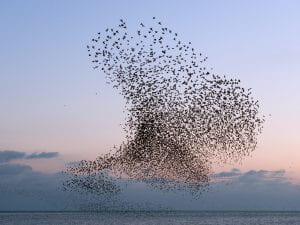CALL FOR PAPERS
Deadline: 19 February 2024 // 6 March 2024
6-7 June 2024
University of Brighton
Online & in-person event
We are excited to announce a two-day symposium aimed at bringing together researchers venturing to make sense of human-animal relationships & multispecies entanglements, using novel, qualitative & creative research methods. Supported by the Arts & Humanities Research Council (AHRC) and the University of Brighton’s Centre of Arts & Wellbeing.
Context
‘there is no such thing as the animal or the human-animal-relationship, but there is a whole spectrum of possible relationships’ (Colombino & Bruckner, 2023, p. 38)
There is a growing scholary interest in the experience and subjectivity of animals, in human-animal relationships, and in the function and standing of animals in culture and society across the humanities and social sciences. The centring of animal experience across multiple settings has been an explicit goal of overlapping interdisciplinary movements for some time now, including (critical) animal studies, human-animal studies, animal history, multi-species methodologies and posthumanism.
These developments have contributed to the elaboration of alternative theories and methods that place the life of animals and the dynamics of human–animal relations firmly in the spotlight (Johnson, 2015, p. 299). Methodologically, researchers seek tools for moving ‘beyond anthropocentric histories and social narratives… putting animal life in the spotlight’ (Johnson, 2015, p. 299); for studying animals as more than merely ‘passive objects for humans to act upon or use as tools or resources’ (Mullin, 2010, p. 148); and for accounting for animals as active contributors to human-animal interpersonal, social and cultural encounters. However, getting at the ‘animal side’ of human-animal relationships remains a challenge for researchers in any field, a risky practice whereby most of our established methods originate from and remain grounded in the exclusive study of human activity.
This symposium encourages contributions from researchers developing and utilising methods that address animal experience in interpersonal, social and cultural settings, both ‘sides’ of human-animal relationships, and/or the messiness of multispecies entanglements. We are particularly keen to encourage contributions from scholars, researchers, and practitioners from exploring theoretical and methodological innovations, and the use of creative, arts-based and visual methods in understanding human-animal and multispecies relations, that bring fresh insights and perspectives on human- animal and multispecies entanglements (e.g. Fawcett & Johnson, 2019; Fennell, 2022; Haanpää et al. 2019; Marguiles, 2019; Sachs Olsen, 2020; Turnbull, 2020).
Haraway’s list of ‘human–animal worlds’ where ‘ordinary beings-in-encounter’ takes place is instructive as to the range of topics being explored in animal, multispecies and human-animal studies, the posthumanities and anthrozoology: ‘in the house, lab, field, zoo, park, truck, office, prison, ranch, arena, village, human hospital, slaughter house, vet clinic, stadium, barn, wildlife preserve, farm, city streets, factory, and more’ (Potts and Haraway, 2010, p. 322). The ‘and more’ is equally important here – this list is indicative only. We invite researchers from any discipline and any career stage to engage with any aspect of human-animal and multispecies worlds.
Submission Guidelines – panels & presentations
- For all submissions, please let us know if you intend to present in-person or online
- For individual presentations, please submit an abstract (300 words) and a brief author(s) bio (100 words total) with contact details by 19 February 2024 to CentreforArtsandWellbeing@brighton.ac.uk
- For pre-formed panels of three speakers, please submit an abstract for the panel (no more than 500 words) and a bio (100 words) for each speaker by 19 February 2024 to CentreforArtsandWellbeing@brighton.ac.uk
- Notification of acceptance by 21 March 2024
- Please direct any informal enquiries to symposium organisers Matthew Adams matthew.adams@brighton.ac.uk or Jess Moriarty J.S.Moriarty@brighton.ac.uk
- Registration will open on 15 April 2024
Other Information
- Accepted presenters will have a maximum of 20 minutes for individual presentations, and panels will consist of three presenters with 45 minutes allocated for the panel session, in addition to a 10- minute Q&A.
- Keynote speakers will be announced closer to the event date.
- This will be an in-person event. Lunch and refreshments will be provided. An optional dinner and entertainment will be arranged for participants on the evening of Thursday 7th June in central Brighton.
- Attendance costs £50, and registration is mandatory on Eventbrite. Free and further subsidised places are available for those on a low income, doctoral researchers and students – please contact Matt or Jess directly for details.
- If your submissions is successful, you will be asked if you have any audiovisual or technical requirements for your presentation. Non-traditional ways of presenting are welcome, and if this applies to you, just let us know how you intend to use the time/space.
References
Fawcett, L. & Johnson, M. (2019). Coexisting entities in multispecies worlds: Arts-based methodologies for decolonial pedagogies. In Lloro-Bidart, T. & Banschbach, V. (Eds.), Animals in Environmental Education (pp. 175-193). Palgrave Macmillan.
.
Fennell, D. (2022). Animal-informed consent: Sled dog tours as asymmetric agential events. Tourism Management, 93(104584).
.
Haanpää, M., Salmela, T., García-Rosell, J. C., & Äijälä, M. (2019). The disruptive ‘other’? Exploring human-animal relations in tourism through videography. Tourism Geographies, 1-21.
.
Johnson, E. R. (2015). Of lobsters, laboratories, and war: Animal studies and the temporality of more-than-human encounters. Environment and Planning D: Society and Space, 33(2), 296–313.
.
Lorimer, J. (2010). Moving image methodologies for more-than-human geographies. Cultural Geographies, 17(2), 237-258.
.
Margulies, J. D. (2019). On coming into animal presence with photovoice. Environment and Planning E: Nature and Space, 2(4), 850-873
.
Potts, A., & Haraway, D. (2010). Kiwi chicken advocate talks with Californian dog companion. Feminism & Psychology, 20(3), 318–336.
.
Sachs Olsen, C. (2022). Co-creation beyond humans: The arts of multispecies placemaking. Urban Planning, 7(3), pp. 315-325.
.
Turnbull, J. (2020). Checkpoint dogs: Photovoicing canine companionship in the Chernobyl Exclusion Zone, Anthropology Today, 36(6), pp. 21-24.
Image source: Photo by Miguel Á. Padriñán





Leave a Reply